Three pots, endless possibilities — this vibrant balcony trio of herbs and succulents turns even the smallest urban corner into a lush, living retreat. Proof that a thriving garden starts with just a little space and a lot of care.
You don’t need a backyard to start gardening — three pots on your balcony are enough to transform your space into a living, breathing garden. Even in the smallest urban settings, a few well-placed containers can bring nature closer, turning bare concrete into a lush, calming retreat.
Many beginners, however, overcomplicate balcony gardening — buying too many plants, mixing mismatched pots, or overlooking basic setup principles. The result? Crowded corners, unhappy plants, and wasted effort.
This guide shows how to create a stylish, thriving mini garden with just three pots — the perfect starting point for beginners or anyone short on space.
You’ll learn how to choose the right pots, pair plants with similar care needs, and arrange them for visual balance and easy maintenance. Plus, you’ll get a few beginner-friendly plant combinations to start growing your balcony oasis right away.
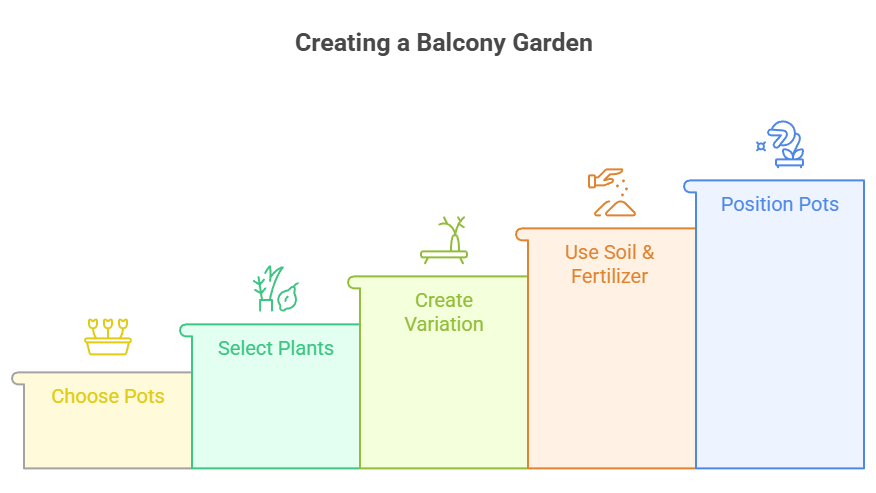
Step-by-step to balcony garden success — from choosing pots to perfect placement, these five stages turn any balcony into a thriving green retreat.
Step 1: Choose the Right Pots
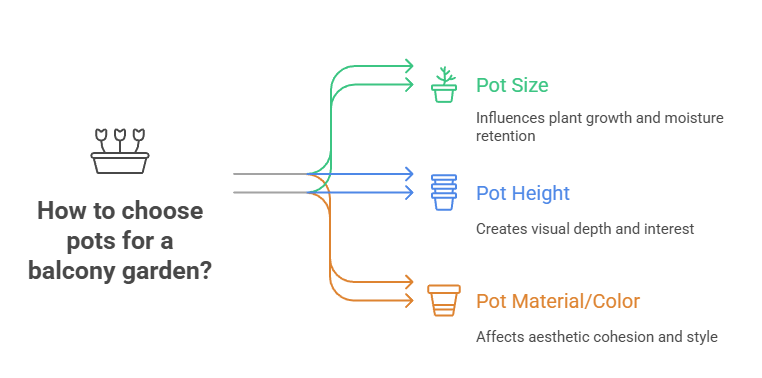
Your choice of pots sets the foundation for both the aesthetic and health of your balcony garden. The right containers don’t just hold plants — they shape the entire atmosphere of your space.
Why it matters: Pots influence how well your plants grow and how cohesive your setup looks. Large pots retain moisture longer and support deeper root systems, while smaller ones are ideal for herbs or compact plants.
Design tip: Create visual depth by mixing three different heights — one tall, one medium, and one small. This layering draws the eye and gives your balcony garden dimension without clutter.
Style note: Stick to a consistent color palette or material. Terracotta offers warmth and breathability, ceramic brings polish, and modern matte finishes lend a minimalist touch. Keeping the palette unified prevents the setup from looking chaotic.
Practical tip: Always ensure each pot has proper drainage holes — stagnant water leads to root rot faster than any other mistake. Add a saucer underneath if needed to catch excess water.For inspiration on combining shapes, colors, and heights, see The Balcony Garden’s design guide for three-pot clusters.
Step 2: Select Plants with Similar Care Needs
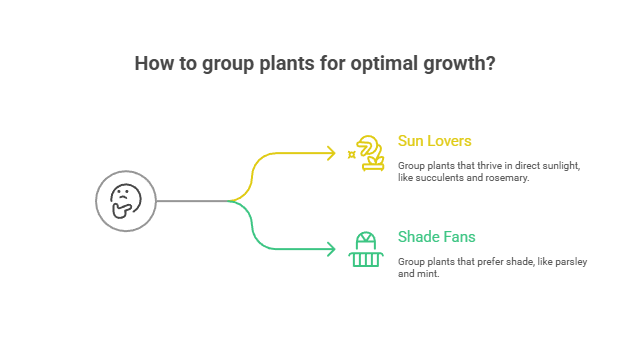
When you’re working with limited space — and just three pots — simplicity is your best strategy. The easiest way to keep your balcony garden thriving is to group plants that share similar sunlight, watering, and soil requirements. This ensures that all your plants flourish under the same routine, rather than constantly needing individual care.
Simplify success: Think in terms of light and moisture compatibility. Mixing plants with drastically different needs (like succulents and basil) will almost always lead to disappointment.
Examples:
- Sun lovers: succulents, rosemary, lavender.
- Shade fans: parsley, mint, fern.
Design synergy: Within those groups, play with texture and color contrast — the silvery-green of lavender beside the deep green of rosemary, or the soft fronds of a fern paired with bright mint leaves. Visual contrast adds personality, even when you’re working with just a few pots.For more plant ideas suited to different balcony conditions, check out Gardening Know How’s guide to the best balcony plants.
Step 3: Create Height and Texture Variation
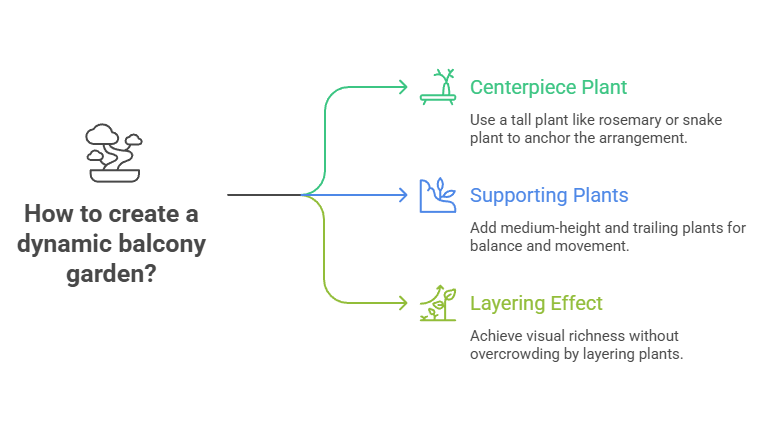
A great balcony garden feels dynamic, not flat — and the key to that is height variation. Using different plant sizes creates a layered effect that draws the eye and makes your setup look fuller than it really is.
Centerpiece plant: Choose one tall plant to anchor the arrangement and act as your focal point — like rosemary, a snake plant, or even a compact ornamental grass.
Supporting plants: Around it, place a medium-height plant for body (like basil or oregano) and a trailing one that spills over the pot’s edge (such as ivy, thyme, or trailing succulents).
Why it works: Layering creates both balance and movement — giving a sense of abundance without overcrowding your small space. Even with just three pots, this structure turns your balcony into a visually rich mini garden.
Step 4: Use the Right Soil and Fertilizer
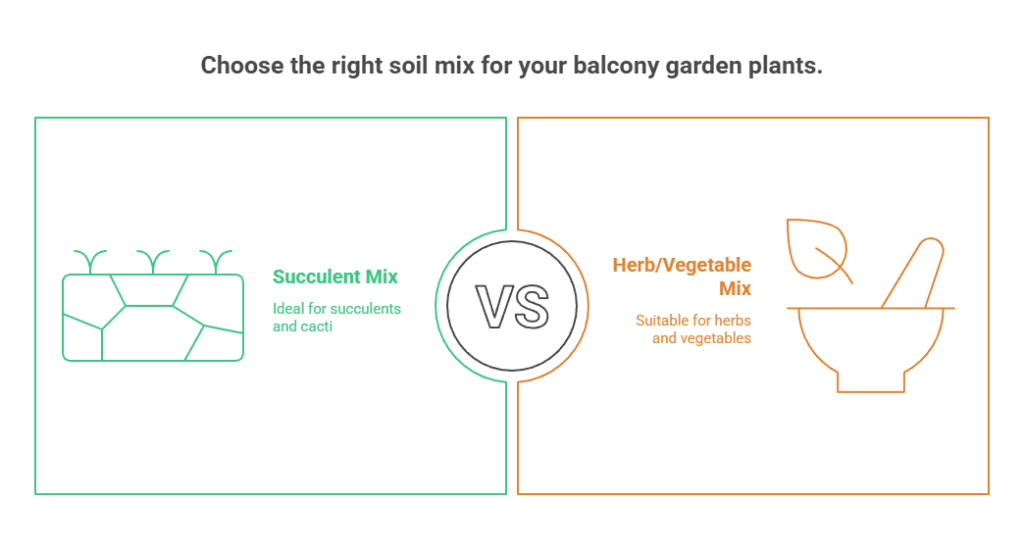
Your soil is the foundation of your balcony garden — get this right, and your plants will reward you. Container plants rely entirely on the soil you provide, so quality and composition matter more than in-ground gardens.
Soil selection: Always use a lightweight, well-draining potting mix, never dense garden soil. Garden soil compacts in pots, suffocating roots and retaining too much moisture. For the best results, go for a high-quality potting blend formulated for containers.
Fertilizer: Feed your plants with a slow-release organic fertilizer or a liquid feed every 2–3 weeks during the growing season. Because nutrients wash out of pots more quickly, consistent feeding keeps growth strong and leaves lush.
Pro tip: Match the soil type to your plants.
- Succulent mix: gritty, sandy, and fast-draining.
- Herb mix or vegetable mix: slightly richer and moisture-retentive.
Step 5: Position Your Pots for Light and Protection
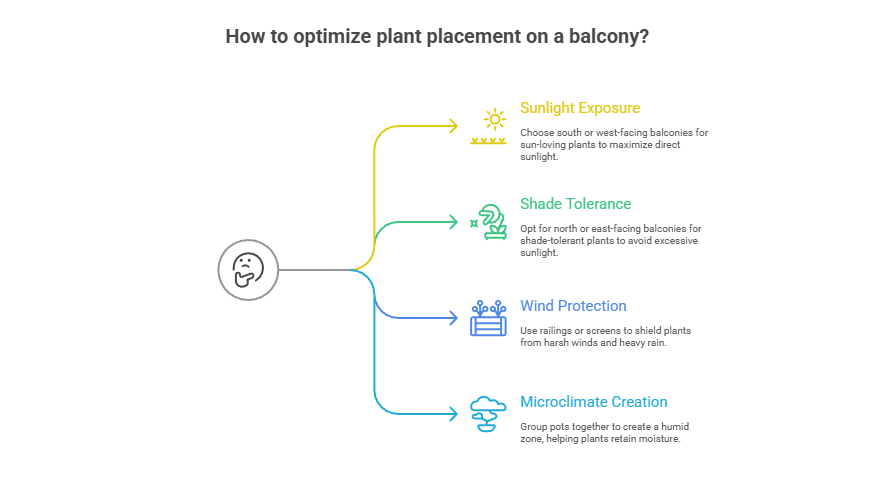
Placement is everything when it comes to balcony gardening. Your plants’ success depends on how much light and shelter they get.
Sunlight guide: For most sun-loving plants (like tomatoes, lavender, or rosemary), south- or west-facing balconies are ideal since they receive the most direct sunlight. If your balcony faces north or east, choose shade-tolerant varieties like mint, parsley, or ferns.
Protection: Balconies can amplify wind and rain. Use railings, screens, or taller pots to shield delicate plants from harsh gusts or heavy showers that can damage foliage.
Microclimate tip: Grouping pots close together creates a small humid zone, helping plants retain moisture and stay cooler during heatwaves — a simple trick that mimics the natural conditions of a garden bed.
Suggested Plant Combos for Beginners
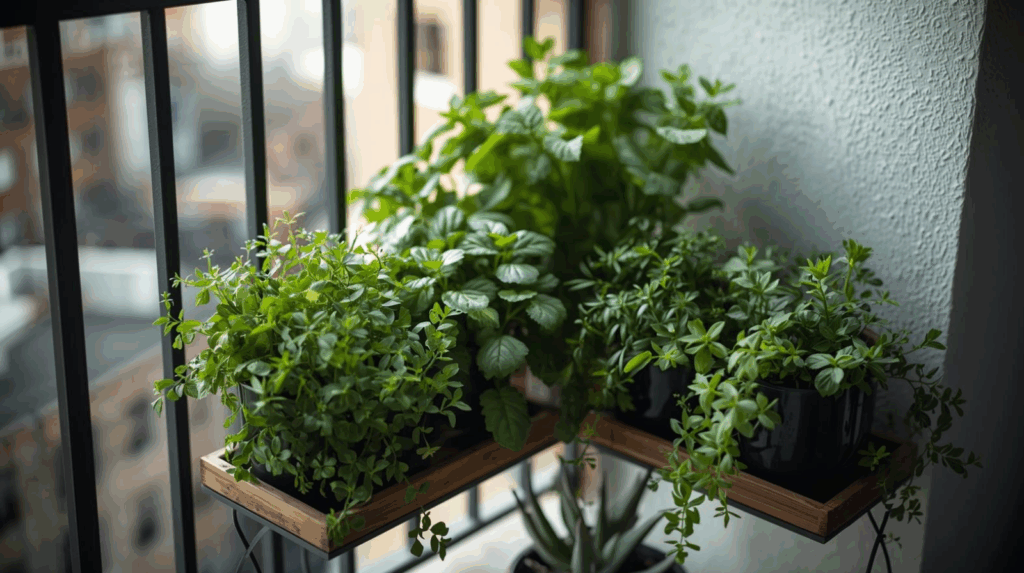
Turn your balcony into a green escape — start your three-pot garden today and see how a little greenery can completely transform your space.
Starting small doesn’t mean you have to compromise on variety. With just three pots, you can mix practicality, beauty, and simplicity — all while learning how different plants behave in your unique balcony conditions. Here are some easy, beginner-friendly combinations that thrive together:
Herbal Trio: Mint, oregano, and parsley — fragrant, edible, and forgiving for new gardeners. They enjoy similar moisture levels and partial sun, making them a perfect starter mix for cooking and aroma.
Leafy Trio: Lettuce, baby spinach, and kale — quick to grow, nutritious, and ideal for constant harvesting. These greens thrive in cooler conditions and partial shade, offering a steady supply of fresh leaves.
Succulent Trio: Aloe vera, jade, and echeveria — striking, sculptural, and incredibly low maintenance. These plants love full sun and require very little water, giving your balcony a clean, modern look.
Bonus Tips
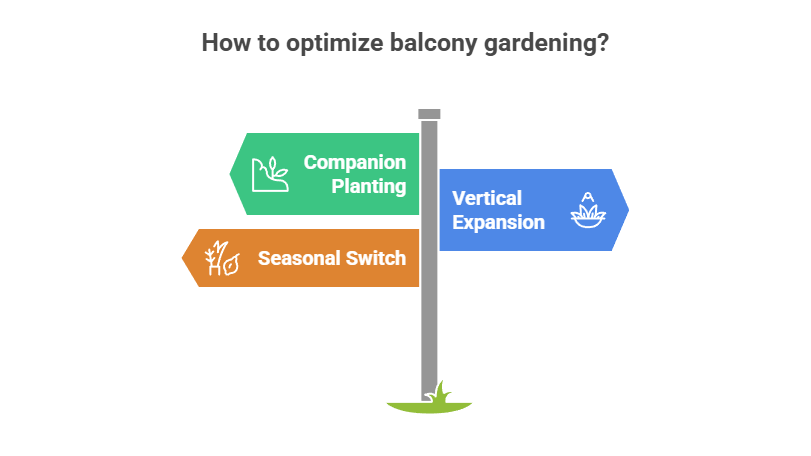
Companion planting: Combine herbs that naturally support each other’s growth — for example, basil near parsley helps deter pests while improving flavor and aroma.
Vertical expansion: If your balcony space is tight, use hanging pots, wall planters, or small trellises to maximize growing area without cluttering the floor.
Seasonal switch: Refresh your garden each season — swap summer herbs for cool-weather greens, or rotate succulents with flowering plants for year-round visual interest.
Even three pots can evolve with the seasons, keeping your balcony lively, productive, and ever-changing.
Final Thoughts & Take Aways
You don’t need a sprawling backyard to enjoy the rewards of gardening — sometimes, three well-chosen pots are all it takes. With a few thoughtful plant choices and simple care routines, your balcony can become a peaceful green escape that feeds both your senses and your table.
Start small, stay consistent, and let your plants teach you along the way. Whether it’s herbs for your kitchen, leafy greens for your salads, or succulents for their calm beauty, your mini garden will thrive with a little attention and curiosity.
This weekend, pick your three pots, choose your plants, and begin your balcony garden journey.
FAQ Section
1. What are the easiest plants for balcony beginners?
Herbs like mint, parsley, and oregano are low-maintenance and adapt well to containers.
2. How much sunlight do balcony plants really need?
Most edible or flowering plants need at least 4–6 hours of sunlight daily, while shade-tolerant herbs or ferns can thrive with less.
3. How often should I water balcony pots?
Check soil moisture regularly — generally, water when the top inch of soil feels dry. In summer, pots may need watering once daily.
4. Can I grow food plants like herbs or greens?
Absolutely. Herbs, salad greens, and compact vegetables like cherry tomatoes or peppers grow very well in balcony containers.
5. What’s the best soil mix for small balconies?
Use a lightweight, well-draining potting mix — avoid garden soil, which can compact and suffocate roots. Adding compost improves nutrition and structure.
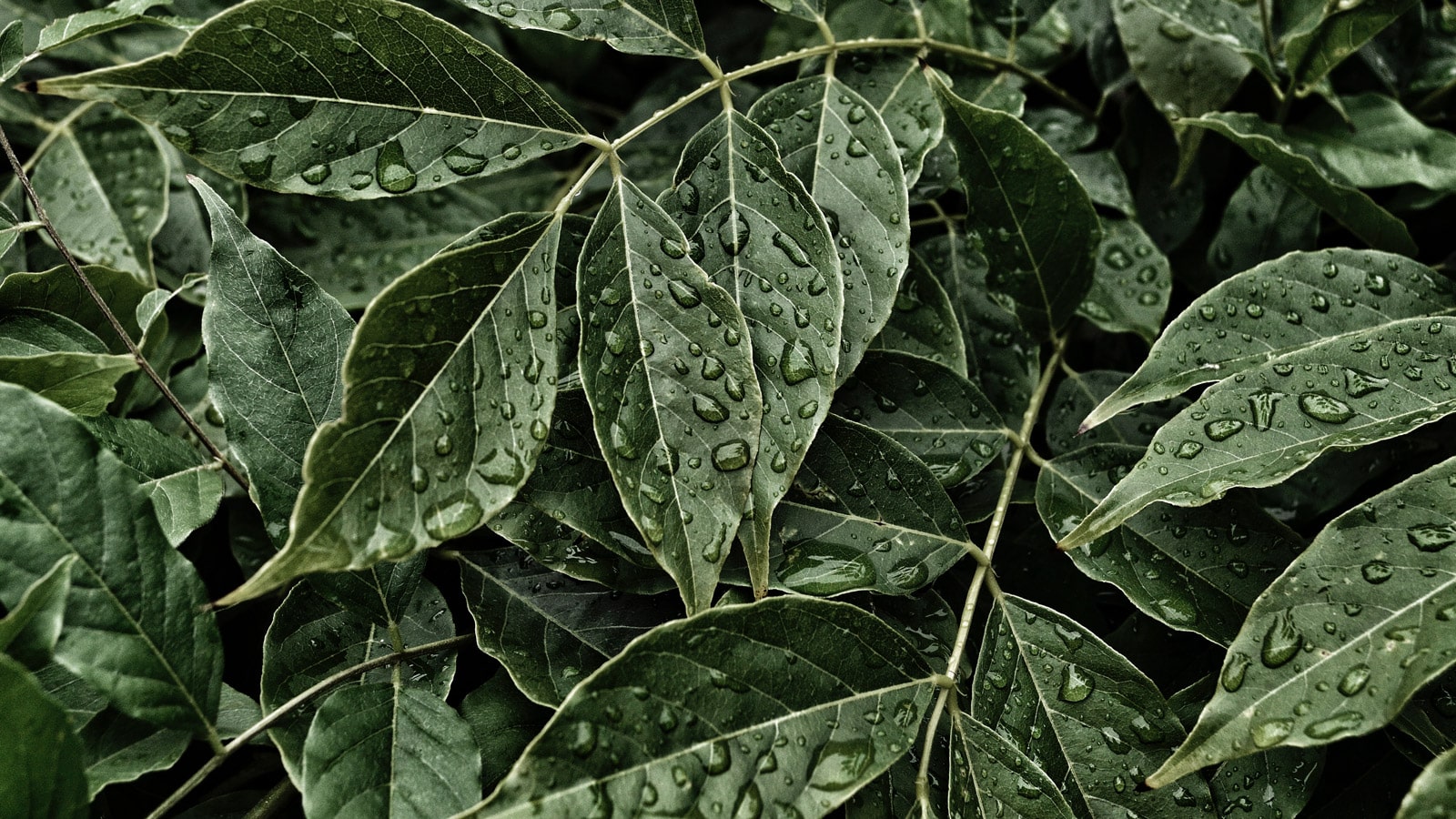

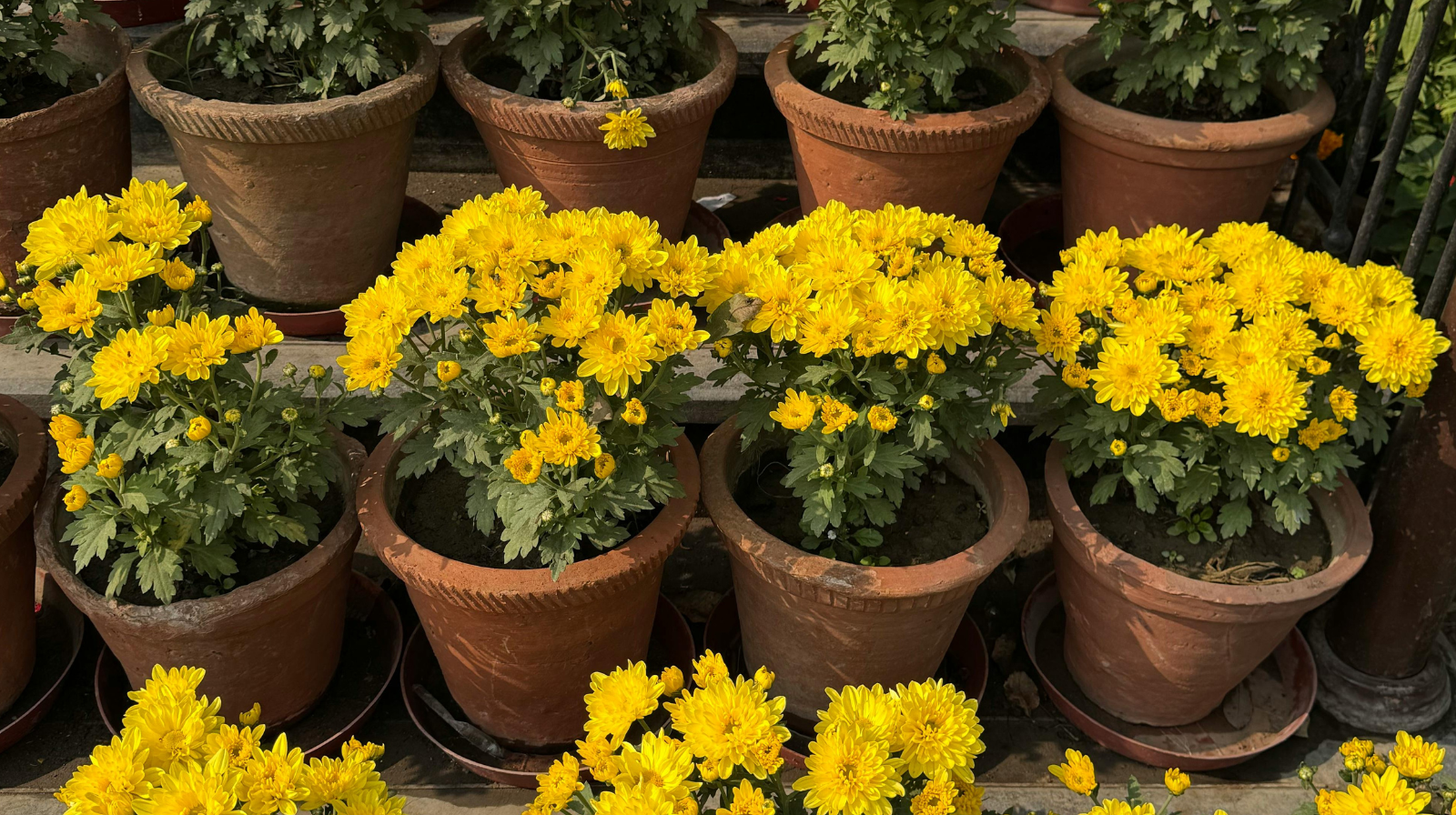

Leave a Reply